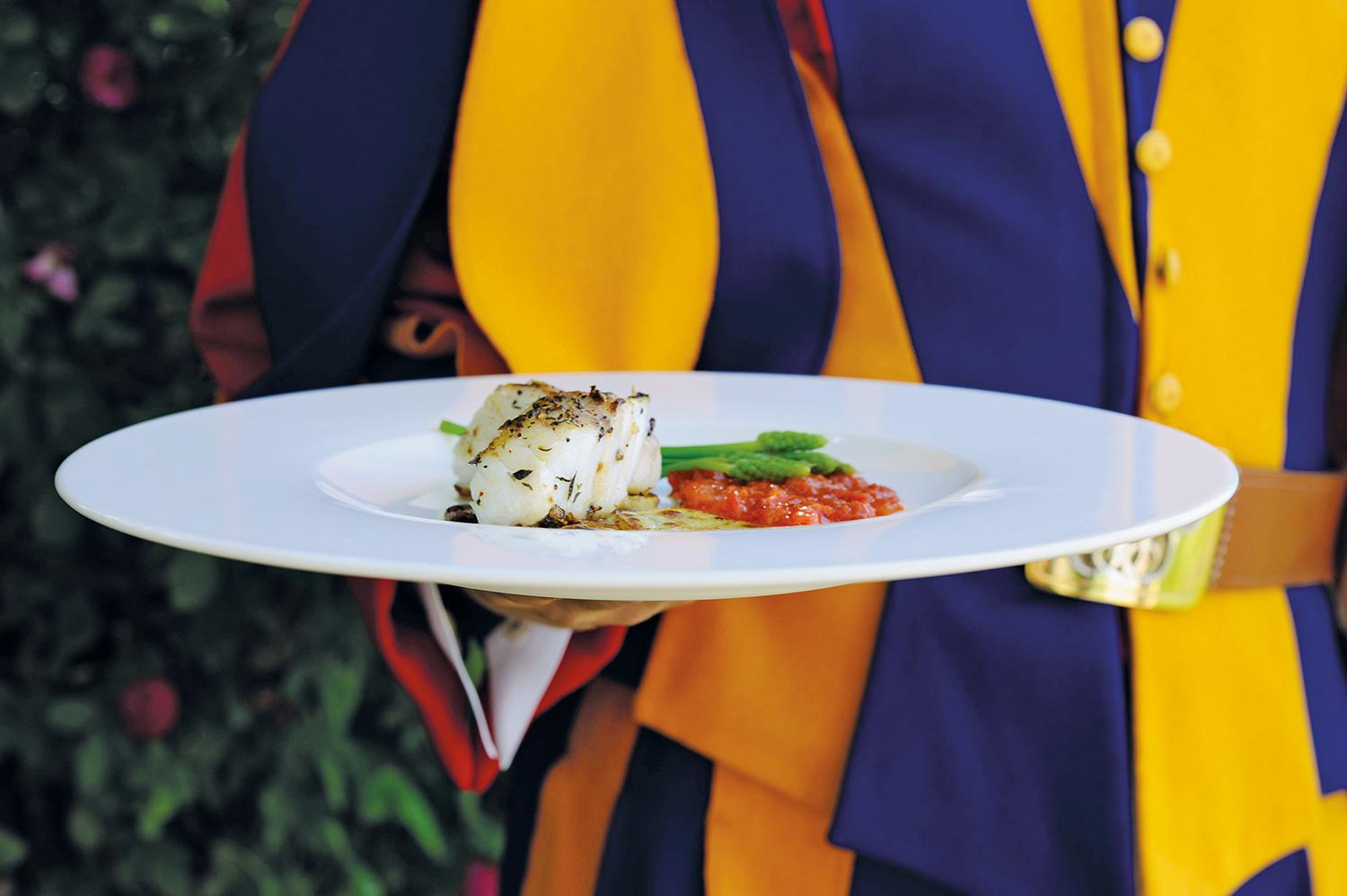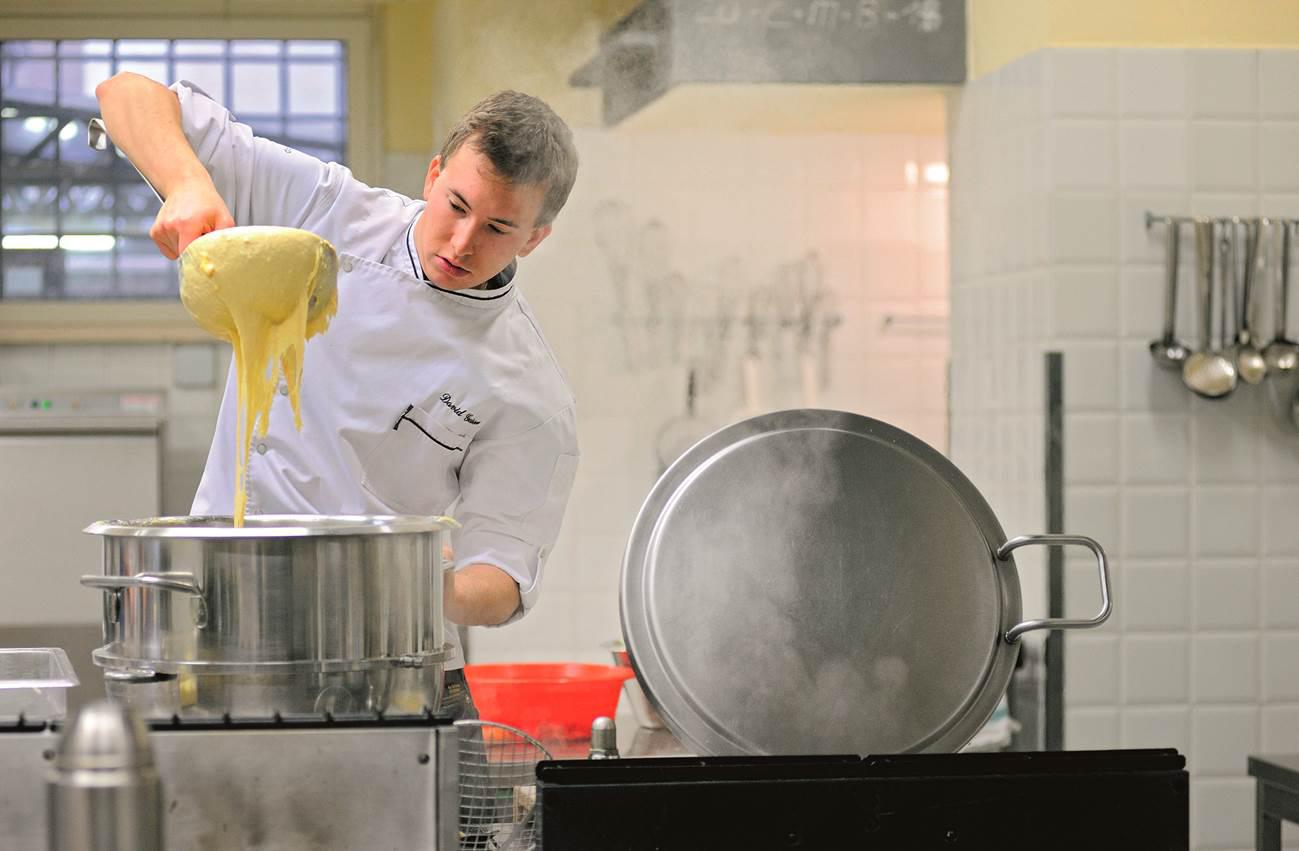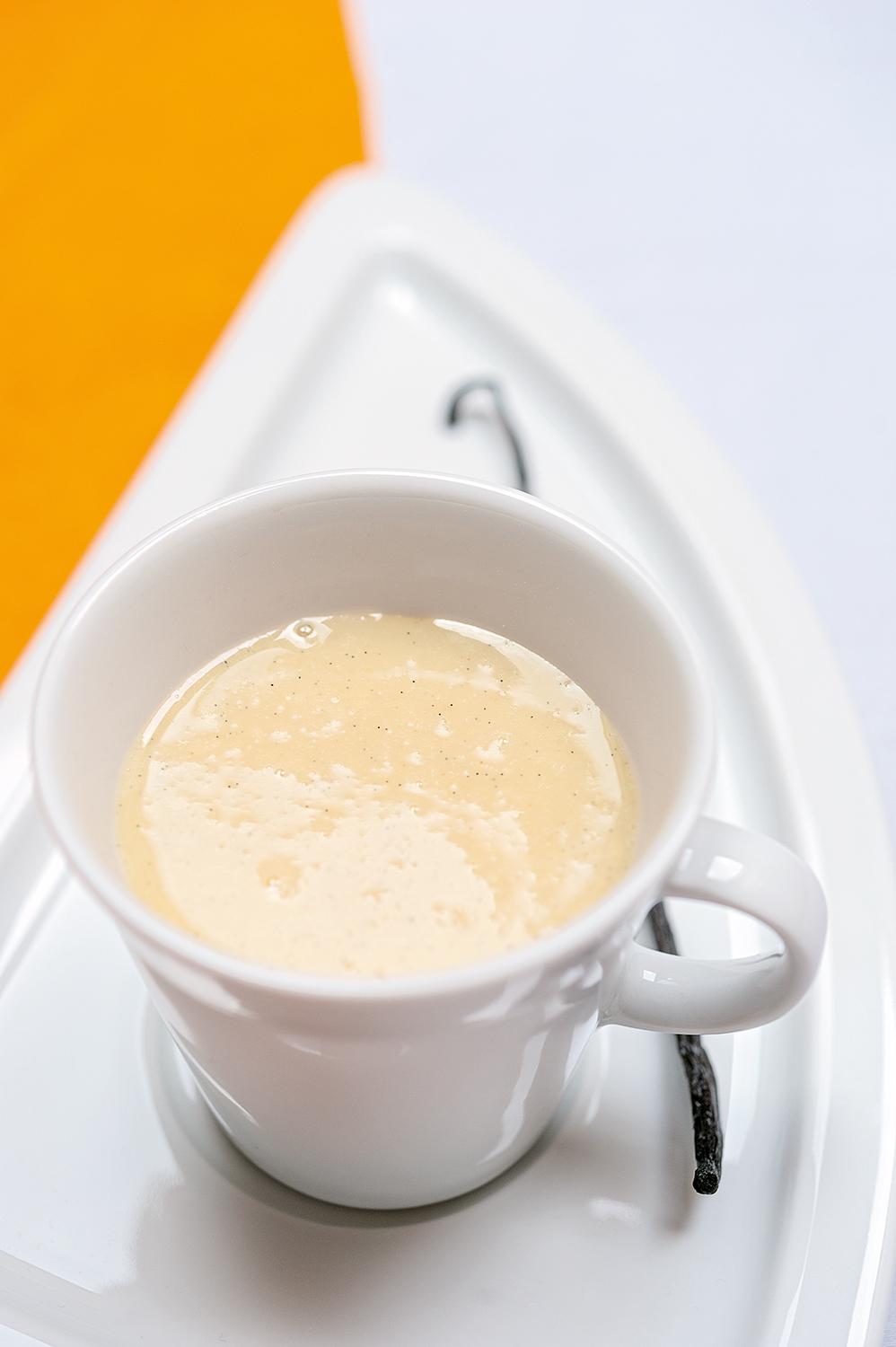Pope’s Swiss Guards show devotion to food

When a young cook from Zurich chose to follow in his father’s footsteps and join the Swiss Guard, he didn’t expect the Vatican to propose a culinary project, the likes of which had never before been seen at the heart of the Catholic church.
David Geisser’s mission was not only to guard the Pope, but in his spare time, to find out the favourite meals of prominent members of the church, and then recreate them to the best of his abilities in the Swiss Guard canteen for inclusion in a unique cookbook.
Two years later, ‘Papal Swiss Guard: Buon Appetito’ has been published, containing 60 recipes and step-by-step instructions (as yet only in German) to create the holiest of dishes – fit for a pope – in your own home.
“It was difficult at first to work out how to combine something military – the Swiss Guard – with a cookbook,” Geisser told swissinfo.ch
As an 18-year-old Geisser had already sampled life as a celebrity chef – a recipe book he made for his end of school diploma became a nationwide success – he made TV appearances and featured in newspapers before starting an apprenticeship as a cook and then coming out with a second publication. It was this past that gave a Swiss Guard colonel the idea.
While Geisser worked on perfecting the recipes, Erwin Niederberger, a sergeant of the guard who has served in the unit for 15 years, wrote everything in between.
“Not everybody wants to have their favourite meals published in a cookbook…some people asked, ‘why do we have to do this?’,” said Niederberger.
On the whole, “personalities at the Vatican”, such as Bishop Georg Gänswein, personal secretary to Pope Emeritus Benedict XVI, and the Swiss Cardinal Koch were happy “to do something new” and share the secrets of their taste buds with the world.
The Cardinal went for that staple of Swiss cuisine, the ‘Wiener Schnitzel with Pommes Allumettes’ (breaded veal escalope with crispy-thin chips), while the Bishop chose the Roman classic, ‘Saltimbocca alla Romana’ (veal topped with prosciutto and sage).
An army marches on its stomach
“Ohne Mampf, kein Kampf,” writes the cookbook’s project leader, Colonel Daniel Anrig, in its introduction.
The saying literally translates as “no food, no battle“, similar to ‘an army marches on its stomach’ and goes some way to explaining the connection between the guard unit and the cookbook.
The book is split into different sections including the favourite meals of officers of the Swiss Guard and prominent people at the Vatican, food for special occasions, such as the swearing-in ceremony and everyday nosh for the members of the guard.
It also offers a clue to the lives of the people behind the famous, colourful outfits of the Swiss unit – the restaurants they visit in their time off, food they like to eat at the summer residence of the pope (though, the book laments, the current pontiff no longer uses this holiday home) and what they do in their spare time (playing football, visiting the beach, Italian lessons).
The 110 guards live in the barracks at the Vatican. In between a range of different shifts they are fed by a group of Catholic sisters from Poland.
“There’s a lot of Italian food, a little bit of Polish-influenced food. There’s always fresh salad and fruit. On Friday’s we have fish or pizza – something without meat. It’s quite good food,” explained Niederberger.

Around once a month, 24-year-old Geisser takes over the cooking duties of the Polish sisters and makes dinner for the rest of the Swiss Guard.
It’s a chance to sample a taste of home – for the younger members of the guard, this can be their first experience of living away from their parents, and the odd Röschti [fried, shredded potato] doesn’t go amiss.
These little insights are something that Niederberger hopes will intrigue readers who wouldn’t normally show any interest in the Catholic church.
“Even people who are not interested in the story or the pope or religion but are [interested] in good cuisine…maybe through this book they will discover a little bit of the Swiss Guard, our history and the Pope. And that would be a wonderful thing.”
A Papal menu
Where the book exercises some creative license is the three menus chosen for the past three popes.
“We didn’t ask the pope, ‘can you please tell us what you prefer?’, but we are with him every day, we know what he does, what he likes,” said Niederberger.
“Pilgrims from Argentina are always bringing these wonderful cookies that are from a very special enterprise. They have ‘Dulce de Leche’ [caramelised milk] inside – and the pope likes them very much.”
The food chosen for the popes in the book are instead “typical” meals that fit their nationalities or contain certain things they were known to enjoy.

More
Dulce de Leche
John Paul II would have enjoyed a Polish three-course menu, featuring beef roulade with red cabbage, while Benedict XVI, the book claims, would likely choose Bavarian food including a Regensburger sausage salad.
Unlike his predecessor, who had three Catholic sisters cooking his food at the papal apartments, Pope Francis eats with everybody else from the Vatican and its guests at the Casa Santa Marta guesthouse, where he has taken up residence.
Should you want to cook up a modern papal storm in the kitchen, the cookbook recommends starting with Argentinian Empanadas (filled pastries) on a red and yellow pepper salad, followed by ‘Colita de Cuadril’ (tri-tip cut of beef) and finished up with of course, ‘Dulce de Leche’.
For those looking for something a little more low-key, the section on favourite meals of the Swiss Guard’s patron saints may be more suitable.
St. Nicholas, a Swiss hermit, often referred to as ‘Bruder Klaus’ is actually said to have lived in solitude for 19 years without any food at all, except for holy communion.
The book’s authors therefore opted for a dish inspired by his simple life – an omelette with fresh herbs.

In compliance with the JTI standards
More: SWI swissinfo.ch certified by the Journalism Trust Initiative














You can find an overview of ongoing debates with our journalists here . Please join us!
If you want to start a conversation about a topic raised in this article or want to report factual errors, email us at english@swissinfo.ch.